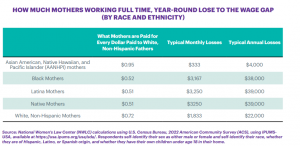Discussions of trans youth and their families typically focus on relationships with parents: how parents allow, promote, or discourage particular gender identities and expressions. But a family is often more than parents, and relationships with other family members, such as siblings, can be especially important for young people. Correcting an over-emphasis on parents in existing research, my colleagues and I wanted to hear from trans youth about the role their siblings played in shaping their family experience. We interviewed 52 trans youth and asked them what their siblings did and did not do about their gender identities.
Our new study discovered trans youth often identify their siblings as supportive family members. In our interviews, we found that siblings affirm the identities of trans youth by being “chill” when they come out, using correct names and pronouns, and standing up to people who misgender their trans siblings. In turn, we highlight the roles siblings play in challenging cisnormativity—social norms that ignore or harm trans people.
“Chill” responses to coming out
Disclosing a transgender identity to family members is often distressing for youth, and fears of family rejection contribute to anxieties around coming out. Many of our interviewees particularly expected and experienced rejection or stigmatization from parents when they came out as transgender or nonbinary. But Leaf (18, Asian American, trans man, he/him) recalled that his oldest sister was “completely chill” since he told her he is a man. (All names here are pseudonyms participants chose for themselves.) Unlike when he came out to his parents, when Leaf came out to his sister, it was “like telling her, ‘Oh yeah, I dye my hair this color.’ ‘Okay.’”
Leaf is not the only one we talked with who has a “chill” sibling. As Lorren (18, Chicana, nonbinary, they/he/she) explained, “[my sister] knows who I am and she doesn’t care…As long as I’m me, it’s fine.” Leaf, Lorreen, and others we interviewed agree: they felt safe to be themselves around their siblings, because their siblings thought it was no big deal.
Navigating cisnormativity
For many of our participants, siblings also actively affirmed the gender identity of trans youth. For instance, siblings would call trans youth by their chosen name and pronouns. In doing so, they challenged cisnormativity within their family.
Siblings also stood up to parents when they tried to control how trans youth expressed their gender. When parents would criticize how their trans youth expressed themselves through hair styles, makeup, and clothing, siblings sometimes got involved. They discouraged parents from being too controlling and instead encouraged parents to respect the authority of trans youth themselves.
But in some families, outright challenges to cisnormativity did not feel safe to participants. Clay (16, Hispanic/White, trans man, he/him), who has a transphobic dad, explained that he asked his siblings and mom to deadname (use his name assigned at birth) and misgender him around their dad. And yet Clay’s siblings also use his chosen name and gender-affirming pronouns when their dad is not around, which Clay liked because “they know the truth” about his gender.
Trans youth and their siblings strategically navigate gender recognition to promote the safety of trans youth within their family of origin. Safety was an important concern for our participants, who all had negative or mixed relationships with their parents, because of the high rates of homelessness and housing instability for trans youth. But even when it is not safe to be completely out in a family, trans youth found partners in their siblings to feel less alone.
Standing up to others
The support trans youth reported receiving from their siblings also extended beyond the family. Siblings encouraged other people to resist cisnormativity by correcting individuals who deadname or misgender trans youth. For example, Devon (18, Hispanic, nonbinary, they/them) explained that it can be hard for people to use they/them pronouns, but their sisters “are very adamant about correcting people on my behalf.” Even though Devon doesn’t like correcting people because they are shy, their sisters would tell people “It’s they. They’re nonbinary. It’s they.” By correcting how other people refer to trans youth, siblings challenge the assumption that gender is binary and that everyone is cisgender.
What makes siblings important?
The family has been described by some gender scholars as a “gender factory” because of the important role parents play in how their children perform gender, either by reinforcing traditional forms of masculinity and femininity for children assigned male or female at birth, or by encouraging and embracing children’s nonconforming gender expressions or trans identities. The findings in our study highlight the part siblings might play in this “gender factory.” Because of the research design and sample selection in this study, nearly all participants had parents who were unsupportive or ambivalent (a mix of supportive and unsupportive) toward their transgender, nonbinary, or gender diverse identities. However, about 81% of our participants had at least one supportive sibling.
Our study encourages more attention to children and youth as agents of change in families. Understanding how gender norms shift requires looking beyond parents and recognizing the important role of siblings. Even though children and youth are often seen as disempowered within families, our findings show that siblings challenge cisnormativity and encourage others to resist oppressive gender norms.
Katherine Alexander (she/her) is a PhD student in the Department of Sociology at Rice University. Her research focuses on gender, health and medicine, and family. In particular, Katherine’s research examines the experiences of LGBTQ+ people in navigating and resisting cisnormativity and heteronormativity in areas like family and medicine using both quantitative and qualitative methods. Her research has been published in the Journal of Homosexuality, Social Science and Medicine, and Gender & Society. Follow her on Substack @ksalexander.
















